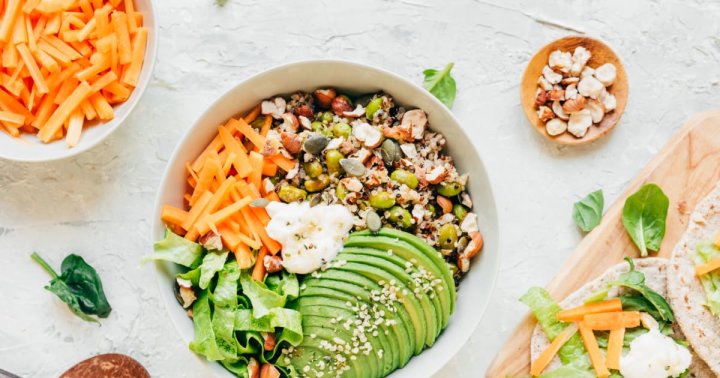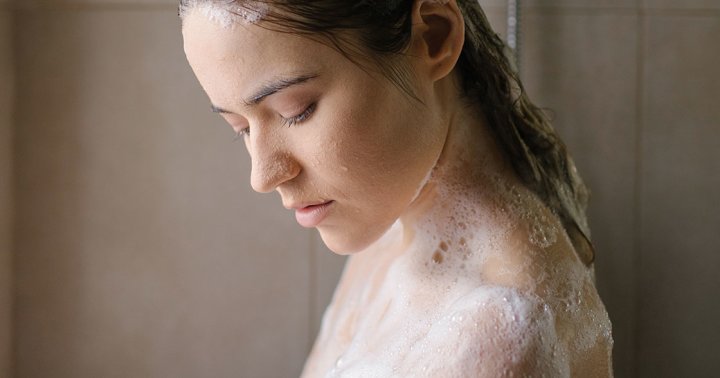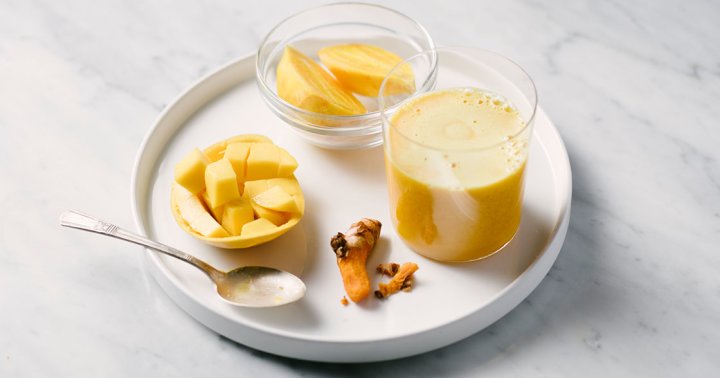Top 7 tips to start a successful home yoga practice
Why practise yoga at home? Practicing yoga in a group class can be really fun, especially when you get to enjoy the group vibes and get to know like-minded yoga lovers. This can be a source of motivation for...

Why practise yoga at home?
Practicing yoga in a group class can be really fun, especially when you get to enjoy the group vibes and get to know like-minded yoga lovers. This can be a source of motivation for you to keep getting on your mat.
At the same time, if you want to deepen your practice, there is a need to develop a personal relationship with yoga through an independently led home yoga practice.
Some of the key benefits of a home yoga practice include:
Find Freedom – practise yoga whenever you like. You no longer need to fit your life around a fixed scheduled yoga class Wear anything you like – you don’t need to feel pressured to wear yoga pants for your practice; I love practising in gym shorts or PJs at homeBe location agnostic – you can get your yoga practice in even if you are traveling or away from your studioPractise intentionally – find time to focus on specific yoga poses that you find challenging. You have all the time at home to refine these poses rather than skimming through them in a group yoga classFocus on yourself and your practice – it is human nature for us to compare with others in a group yoga class. When practising at home, the only person you focus on is yourself and your yoga.It costs much less than a yoga studio membership – good quality free resources can be found all over the web. Even if you do pay for a membership online or with an app, these tend to be much cheaper than a studio-based classRelax and unwind – turn your practice into a self-care treat. Whether it’s meditative music, a hot cup of tea or a calming CBD oil, you can relax on your own terms within the comfort of your own home
How to get started in 7 steps
Starting a home practice can be daunting, especially since having a yoga teacher to plan, structure and teach yoga relieves you from the homework of having to do it all yourself. It’s a journey akin to learning how to ride a two-wheeler bike when you have been riding with training wheels all along.
To help you kickstart your home practice, here are the 7 simple steps you can take.
1. Set up your personal yoga space
As mentioned in “Debunking the 5 common myths of having a yoga home practice”, the best-case scenario is to dedicate a space that you can set aside permanently for your yoga practice.
While it may not be feasible to have this space dedicated to yoga. Nevertheless, try to find a spot that is quiet and where possible, close to a wall (this will be super useful for various more advanced poses like inversions).
Make sure you get any obstacles such as furniture out of the way. You don’t want to hurt yourself while doing yoga.
You may also want to personalize your space (even if it’s only temporarily) with simple things such as a candle or aromatherapy diffuser. Find out what works for you, and what makes you want to keep going back to your practice.
Setting up your personal yoga space allows you to get your practice in more effectively, even in the midst of noise or distractions. I have done yoga even with my family having breakfast next to me and asking me about the yoga poses, and sometimes with my dog pacing on the mat itself.

2. Get the basic equipment ready
Start with one essential tool – your yoga mat. You can get quality mats online at rather affordable prices.
My first yoga mat was actually from a local store that cost me only SGD $12. Obviously wasn’t the best but I still used it for a good 2 years!
If you are happy to invest in a yoga mat – and I would suggest you to just because it makes so much difference to the quality of practice – get one that offers good durability, stickiness, and comfort.
My current favorite mats are the
Liforme Original Yoga Mat: I absolutely LOVE Liforme’s mats as they are grippy and they provide alignment guides for people who value doing asanas correctly. Because the Liforme mats tend to be quite heavy, I usually use the Travel version that I can carry out for my studio practices as well. Gaiam Sol Dry-grip yoga mat: Possibly the best known for its non-slip surface. I feel safe doing arm balances and even basic poses like downward-facing dog.Manduka Prolite: Oof the best in the market due to its durability and cushioning. It also offers a LIFETIME warranty. Only thing I dislike about this mat is the need for a breaking in period! I’ve had the mat for months, and until now I still feel a slippery film and cannot practically use this for sweaty practices. It still is my go-to mat for specific classes of courseManduka eKO SuperLite Travel Yoga Mat: I travel a lot due to work, and this is the mat I fold into my suitcase for all my trips. Possibly the stickiest of the three mats – I find it the best for travelling but not the greatest for transitioning between poses especially rolling over the toes for vinyasas. Mind you, it is rather heavy for its lack of cushioning, but that is what you get for a sticky, long-lasting travel mat.3. Decide on a Freestyle vs Guided home yoga practice
There are two ways to develop your home yoga practice.
FREESTYLE HOME YOGA PRACTICE
This is when you already have in mind several poses you want to practise and you also know how to do them with good alignment and accuracy.
A freestyle practice is a time for you to work out the kinks in your body or practise challenging poses you want to attain.
Before going straight into the challenging pose (or peak pose) you want to practise, remember to warm up your body well to prevent injuries from stretching cold muscles.
For your warm-up, I would recommend putting several easy poses you want to practise into a balanced sequence which works on all parts of the body. This allows you to ease into your peak pose which you can then set aside focused time to keep practising.
Your peak pose should be the one you spend the most time on as you hone and refine the skills needed. After your peak pose, remember to also do cool down stretches, and most importantly, rest in Shavasana (or corpse pose) to reap all the benefits of your practice

There are several pose categories you may want to familiarise yourself with to build a balanced warm-up sequence:
standing posessitting poseslying posesbackbendsforward bendstwisting posesarm balancesinversionsIdeally, your sequence would feature one or more of the poses from each pose category.
Finally, some people recommend sticking with a set sequence daily. I agree with this statement, only to the extent that you have not outgrown your practice ie. you need more challenging poses to push you to the next level. If you are easily bored like me, try creating two to three sets of simple sequences or poses you want to practice. Change these up every few days.
GUIDED HOME YOGA PRACTICE
This is when you would like to have a taught yoga class, albeit in the comfort of your home. For instance, if you like vinyasa classes, simply look up ‘vinyasa yoga videos’ and you will get a plethora of results to choose from.
The guided home yoga practice does not require as much thinking or effort as the freestyle, but it also means the poses and sequences are not up to you to decide.
There are two ways to achieve a guided class at home
Videos for a full-length class or short tutorials on YouTube and several yoga apps (read here for more free resources I recommend)Non-video based materials such as infographics (commonly found in Pinterest), online articles or yoga-based booksBoth freestyle and guided practices work depending on your goals and schedule. I personally prefer the guided version on days when I just need to squeeze in a practice but have no time to prepare for it beforehand. Other times when I just need to target specific skills, I plan for a freestyle sequence instead
In either case, pay attention to what your body is telling you and push yourself but don’t overdo it. You should find it easier to feel the niggles and tight muscles better than in a group class. Because you are on your own, you focus more on body awareness and working out the kinks – remember to breathe into your tight spots rather than tense them up (as we usually do).
4. Prepare your materials before each practice
For the Freestyle practice
Refer to your favourite yoga videos, apps, articles or class notes and decide on the poses you would like to practicePlan your sequence by writing them down the night beforeFor both Freestyle & Guided practices
During the practice, ensure any guiding materials, including notes, articles and videos are readily accessible during your practice5. Create a learning plan to overcome procrastination and achieve your goals
In embarking on any new endeavour, I recall a motto someone once told me:
think BIG
start SMALL
act FAST
The important thing about building a home practice is to take small actions and build them up to bigger ones. To set aside time for yoga, decide whether you want to practise in the mornings or evenings. Once you have this sorted, carve out small pockets of time in line with your schedule. Sometimes this may only be five minutes, and at times it could be a full hour.
Remember that a journey of a thousand miles begins with a single step.
Your learning plan should make it easier for you to take these actions. Start off with the following:
BE CLEAR ABOUT YOUR LONG AND MID-TERM GOALS
Ask yourself: What do you want to get out of your home practice over the next 2-3 months vs this week
Choose up to three personal goals over different time horizons (long, medium, short term) that you would like to achieve and write them down. Examples include
This will allow you to evaluate your progress subsequently in a more effective manner

PLAN TIME FOR YOUR PRACTICE
Ask yourself: Am I a morning or night person? When do I benefit most from yoga practice? How many days do I want to practiSe yoga?
Regardless of the duration of practice, the key is to cultivate consistency and the habit of arriving at your mat. By starting small and acting fast, you will be able to arrive at your bigger goals one day.
Create daily practice plans on a regular basis, ideally weekly – you can adjust if your schedule changes
PLAN OUT WHAT YOU WANT TO PRACTISE ON A WEEKLY BASIS
Decide on the days you would be doing freestyle vs days for guided practice at home.
It may be useful to define themes and goals for each day of practice. For instance, today, you could be focusing on the core, the next practice could be on cardio (meaning fast-moving yoga flows), and so on.
Some goals may need to be adapted depending on how your body feels on the day itself. For example, after a long haul flight, all I want to do is ease up the stiff back, reduce water retention in my legs, and increase mental clarity for the work ahead. This means my yoga practice will feature less strength-building poses as I normally do, and more twists and heart-opening moves as well as meditation
Do include a longer restorative practice each week to allow your muscles to rest and rebuild.
BUILD YOUR PRACTICE
For freestyle days, write down the poses from each group of asana ie. standing poses, sitting poses, lying poses, backbends, forward bends, twisting poses, arm balances, inversions.
For guided practices, select the video or sequence you want to do during the next practice in line with your theme
To help you develop a thinking structure, we put these planning tips into a printable template and also include a beginner sequence to get you started. Subscribe to The YogaMad to access these free resources!
6. Build your knowledge bank by taking notes from your favourite yoga classes or online channels
After attending your favourite yoga classes, whether online or offline, take time to note down the poses or things you liked about the class
Your notes need not be complicated, just enough for you to recall the points you found help your practice
As you build up knowledge on how to get into poses with proper alignment and warm-up exercises, this will help you to create new ideas for your home practice and eventually gain independence from studio classes
7. Keep a journal to reflect on your progress and adjust your plans
After each practice session, take 5-10 minutes to reflect and write down any thoughts you may have:
Did you find the practice easy or difficult? Which parts were the toughest to handle?Where do you need further work in order to progress towards your goals?How was your focus for the practice? Was it easier or harder than usual to stay mindful on the mat?Were there surprises during the practice? Did you achieve any breakthroughs?How do you feel after the practice? Do you feel less anxious, calmer, or have a greater sense of mental clarity?What would you do differently?Some final thoughts
For those who are just starting out your yoga journey, I recommend finding a qualified instructor to provide some fundamental information on yoga before you start practising at home.
Remember that building your personal yoga practice requires you to put in the hours. We are also created differently and progress may be easier or tougher for different types of yoga focus. What takes someone a few weeks to achieve may take you months or years to do the same.
Use your journal to keep you in check, and at the same time BE KIND to yourself if you have not achieved what you set out to.
The yoga journey is an ultra-marathon and not a sprint. Just keep practising.
Take control of your yoga journey by learning how to build a structured, safe and independent practice at home or on the road without feeling stressed about not having enough time to get on your mat. Get your free guide and planning printables below.
Like this post? Here’s a pin for you to save


 Tfoso
Tfoso 





























